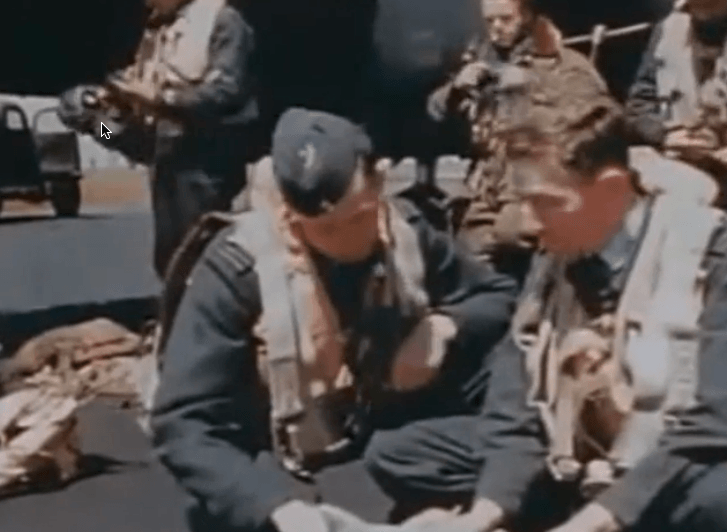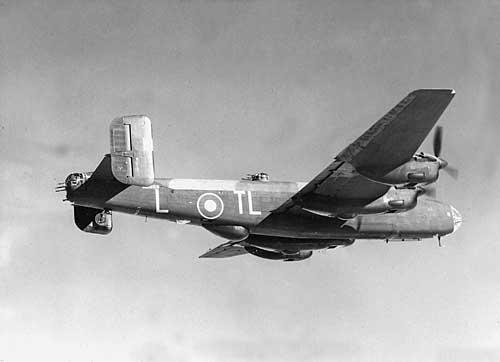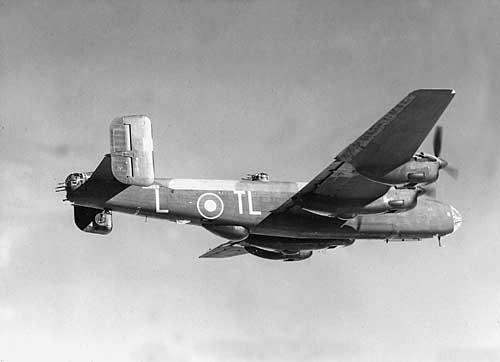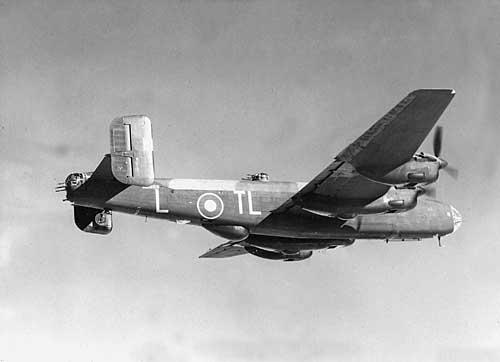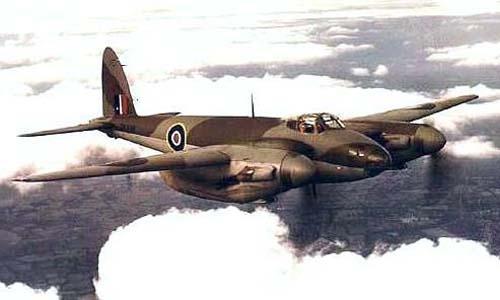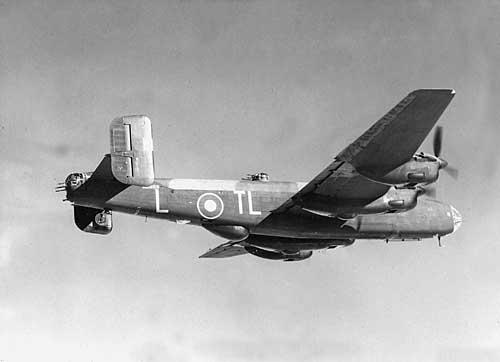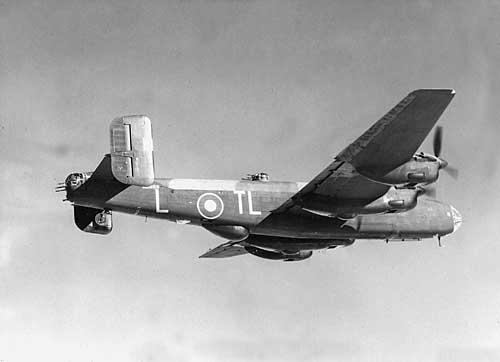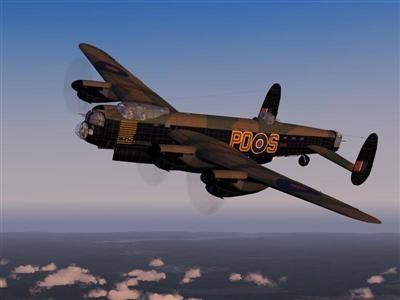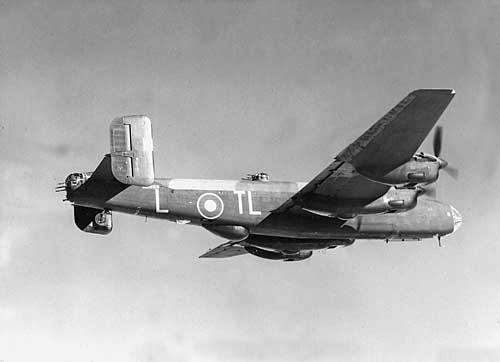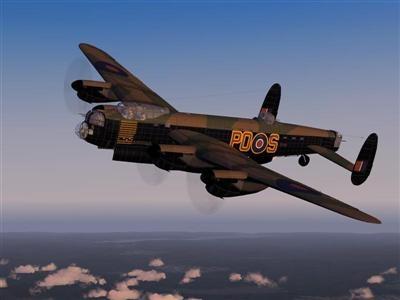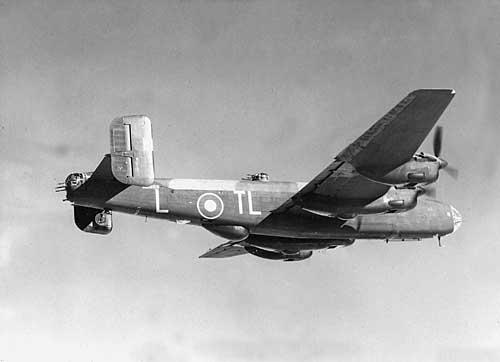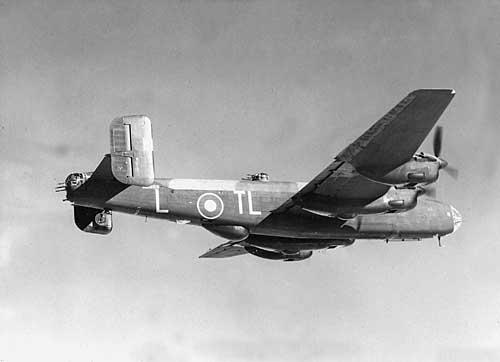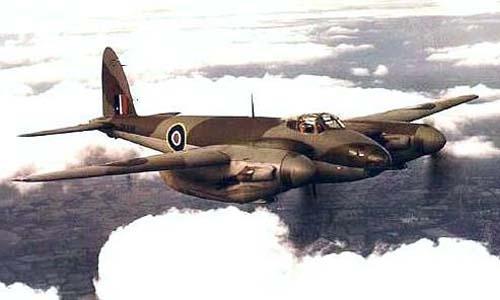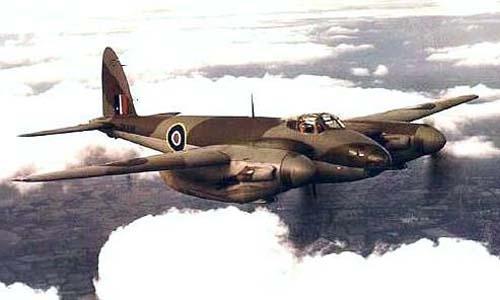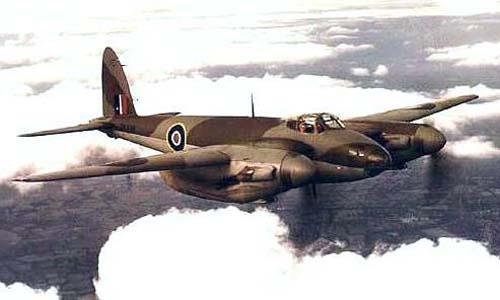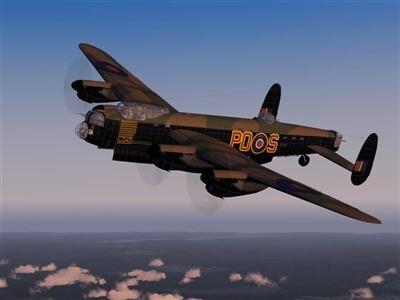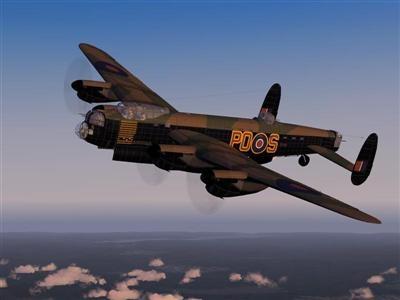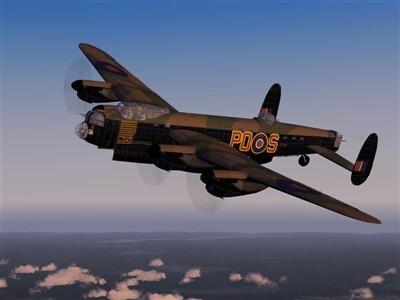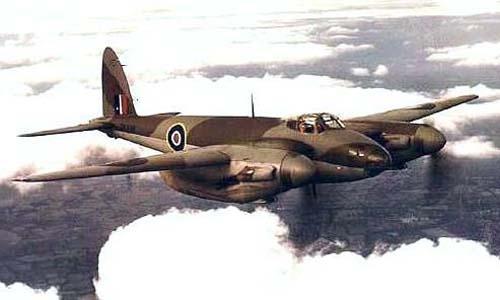
No. 8 (Pathfinder Force) Group
Motto: "We guide to strike".
Badge: A mullet of eight points surmounted by an arrow enflamed, point downwards, in bend sinister. The eight-point mullet, or star, suggests the number of the Group and symbolises astro-navigation, and the flaming arrow the target markers dropped by the pathfinder aircraft to guide the main bomber forces.
Authority: Queen Elizabeth II, March 1955.
The Pathfinder Force came into being on 15th August 1942, with headquarters at Wyton, Huntingdonshire. It was formed at the direct request of the Air Ministry and initially comprised five squadrons - one from each of the operational Bomber Command Groups: No. 1 Group contributed No. 156 Squadron (Wellingtons), No. 2 Group No. 109 Squadron - then "special duties" - (Wellingtons and Mosquitoes), No. 3 Group No. 7 Squadron (Stirlings), No. 4 Group No. 35 Squadron (Halifaxes) and No. 5 Group No. 83 Squadron (Lancasters). The squadrons were located on adjacent airfields within No. 3 Group (No. 7 at Oakington on the outskirts of Cambridge, No. 35 at Graveley, a new airfield between Huntingdon and St. Neots, Nos. 83 and 109 at Wyton and No. 156 at Warboys), but under the direct control of Air Chief Marshal Harris, Air Officer Commanding-in-Chief Bomber Command. This prime organisation allowed picked crews from the operational bomber groups to transfer without the delay of conversion to new types of aircraft, but it soon expanded into a completely new Group - No. 8 (PFF) by 8th January 19431, and eventually re-equipped with Lancasters and Mosquitos, the most suitable aircraft for the task.
The idea of using a corps d'élite of crews of high navigational ability was nothing new, and was in fact a necessary stage in the evolution of the technique of strategic bombing. Much earlier the Germans had employed Kampfgruppe 100 to precede the main, force on each raid, and with the aid of navigational beams (Knickebein, X Gerãt and Y Gerãt) accurately lit up the target area with incendiary fires. These German methods had been quickly appraised and defeated by counter-measures, but in December 1941, Bomber Command had pressed for "the formation of specialist squadrons to initiate raids". No. 3 Group, equipped with Gee apparatus, had already acted in this manner and, by August 1942, when the enemy first began to jam transmissions, had raised the average of the main force aircraft reaching the precise target in favourable weather to 40 per cent, compared with 26 per cent in the three months previous to February 1942. This was not sufficient, however, to ensure ultimate success by night bombing, and Harris, though strongly opposed to the formation within Bomber Command of a corps d'élite, with its inevitable disadvantage of fostering jealousy, and himself advocating a specialist squadron within each group, finally agreed to the formation of the new force to be commanded by Group Captain DCT Bennett. Bennett, an Australian pilot in the RAF and a former CO of both Nos. 77 and 10 Bomber Squadrons, commanded the Pathfinder Force throughout its entire fighting career.
The Pathfinder Force began operations within a few hours of its formation and continued its work of leading the main force against the enemy until the bombers' offensive ceased, shortly before VE Day.
The gallantry of the PFF is legendary, and its contribution to the war effort immense, perfecting as it did techniques for precision main force bombing. Probably the greatest of many successes was its part in the sustained Battle of the Ruhr.
The greatest industrial area in the whole of Germany, the Ruhr was - not surprisingly - the most heavily defended target in the world. In addition to its defences it was covered by an almost permanent smoke haze, which at night made visual pin-pointing of towns well-nigh impossible. The PFF was able to penetrate that industrial smoke haze. It had Mosquito aircraft equipped with the blind-bombing device known as Oboe, which could seek out the targets in all weathers, and it could drop brilliant target indicators which would shine through the blanket of smoke. Thus prepared, the RAF's Battle of the Ruhr began in March 1943, and one by one the towns of the "Black Country" of Germany, complete with their many factories, began to go under from the terrific onslaught that hit them.
In April 1943 - in time for the Battle of the Ruhr - the PFF's strength was increased by two squadrons, i.e. No. 405 (RCAF) Squadron, flying Halifaxes, which came down from the North of England to take over the new airfield at Gransden Lodge, and No. 97 Squadron, flying Lancasters, and based at Bourn, the airfield on the Cambridge road near Caxton Gibbett. At the beginning of June the Pathfinders gained two more squadrons - Nos. 105 and 139 Squadrons, both of which were flying Mosquitos and were based at Marham. Later in the month Pathfinder headquarters moved down from Wyton and were installed in Castle Hill House in Huntingdon.
Such was the way in which the Pathfinder Group gradually expanded to the force which, by April 1945, comprised 19 operational squadrons.
An indication of the terrible power - according to the standards of that time - possessed by this force can be seen from the result of the raid on 25/26th July 1943. On that night more than 600 bombers delivered a fierce 50-minute assault on Essen, home of the huge Krupps armament works. They bombed on accurately-placed ground markers dropped by nine Oboe-equipped PFF Mosquitoes and inflicted more damage on Essen than all the previous attacks put together. Hitler's Propaganda Minister, Dr. Goebbels, recorded in his diary for 28th July: "The last raid on Essen caused a complete stoppage of production in the Krupps works. Speer is much concerned and worried." On the morning after the raid Dr. Gustav Krupp von Bohlen und Halbach came down to his office, took one look at the blazing remnants of his works and fell down in a fit.
The majority of these were marker units, but the story of the Pathfinder Force would be incomplete without special reference to the Mosquito squadrons of the Light Night Striking Force (LNSF). They specialised in lightning "nuisance" attacks with 4,000lb High Capacity bombs ("cookies") on German industrial centres, and are best remembered for their contribution to the 36 successive night raids made by the LNSF on the German capital early in 1945.
1. An 8 Group under Bomber Command was formed earlier (1st September 1941) with its HQ at Brampton but never became operational and was (somewhat confusingly) disbanded on 28th January 1943.
WWII Headquarters: Formed 15.8.42 as "Pathfinder Force" with HQ at Wyton & on 8.1.43 re-designated No. 8 (PFF) Group.
- Wyton : Aug 1942-Jun 1943
- Castle Hill House : Jun 1943 onwards
WWII Air Officers Commanding:
- Air Vice-Marshal DCT Bennett : 13th Jan 1943
- Thunderclap Feb-March
Page 1 of 2


